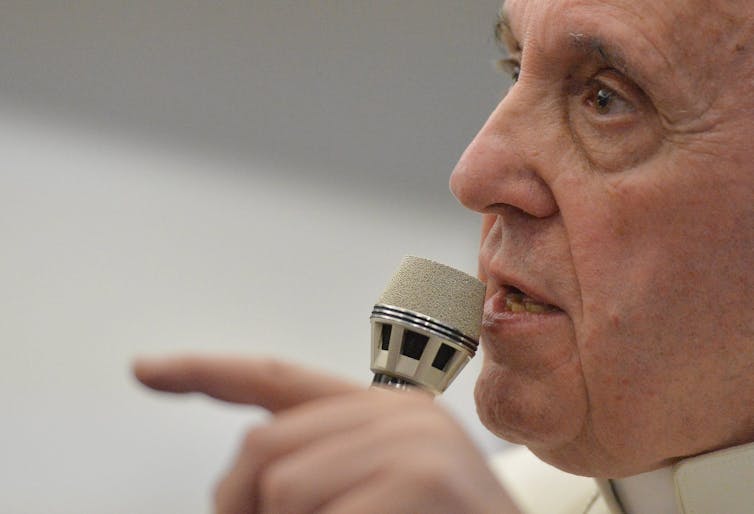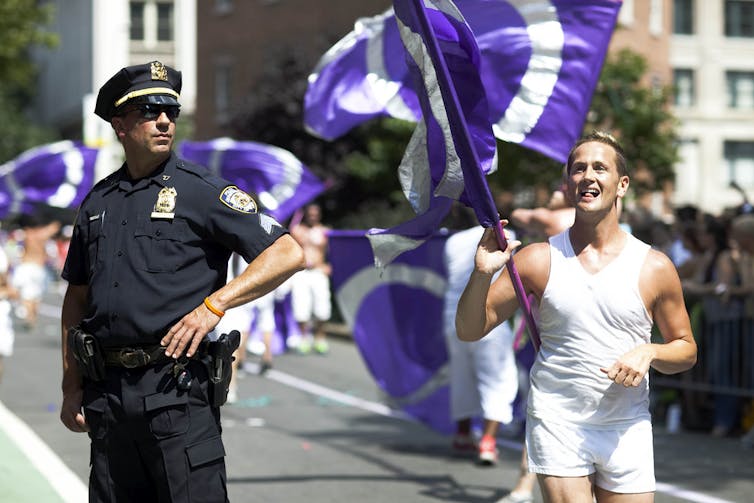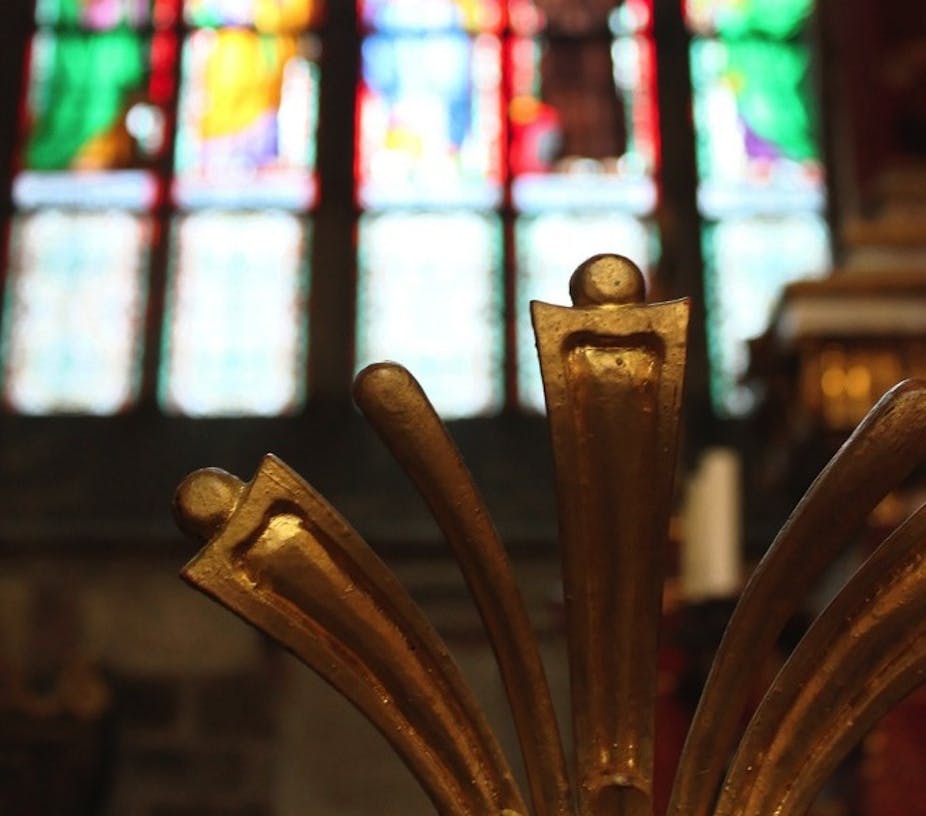Pope Francis made conciliatory overtures to gay Catholics in a wide-ranging press conference on Monday. His comments made headlines around the world and indicate a change in attitude to closeted priests in the Vatican. They did not, however, address the root causes of religious homophobia.
The 80-minute press conference took place on the Pope’s flight home from Brazil and surprised the accompanying press corps. Their discussion covered topics as diverse as the “Vatileaks” scandal, women’s role in the Church, his relationship with the pope emeritus, and the contents of his briefcase.
Dismissing rumours of a “gay lobby” in the Vatican, he said (in Italian):
If someone is gay and he searches for the Lord and has goodwill, who am I to judge?
The Pope did not signal a reversal of the Church’s understanding of homosexuality as “intrinsically disordered” or gay sex as sinful. But he did appear to revise his predecessor’s harsh stance opposing the ordination of homosexual priests.
“The catechism of the Catholic Church explains this very well,” he said. Gay people “should not be marginalised because of this [orientation], they must be integrated into society.”
Snowballing scandals
Pope Francis’s more open attitude towards gay priests may help to resolve tensions surrounding the issue within the Vatican. Pope Benedict’s last year in office was plagued by gay sex scandals, with claims of a gay lobby in the curia, and the expansion of the ongoing “Vatileaks” affair in March 2013 because of allegations of a gay sex ring in the Vatican.
The Vatileaks scandal emerged in January 2012 after pope Benedict’s butler leaked documents that suggested serious financial misconduct in the Vatican. The pope emeritus appointed a commission of cardinals to investigate the scandal in March 2012.

Reporting on December 17 last year, the commission revealed a network of gay prelates involved in homosexual orgies at various locations in Rome. Italian newspaper La Republica claimed it was this report that triggered the pope’s resignation.
On the heels of the Vatileaks sex scandal, Scottish cardinal Keith O’Brien was forced to resign after revelations of sexual misconduct with junior priests in the 1980s.
Journalists and commentators did not hold back pointing out the irony of the situation. The Roman Catholic Church, one of the most vocal opponents of gay rights, was exposed as being full of men having sex with men.
How can we explain this holy homophobia?
A different history
Historically, the Church provided a safe-haven for same-sex attracted men. Religious celibacy enabled gay men to perform a respected social role free from the demands of a heterosexual family. It also provided a space for same-sex friendship and intimacy.
Religious language and context sanctified the expression of love between men. This religious context was distinct from the carnal “love that dare not speak its name”. The Church also developed its own incipient “camp culture” in parallel to mainstream gay subcultures.
Camp Catholic culture was at its height at the very moment when secular sexologists were coining the terms in which same-sex acts and identity are now framed. Ironically, this naming of homosexual desire led to the need to conceal it – in the closet.
Over time, religious and scientific understandings of same-sex desire became integrated. By the early 20th century, the churches came to understand homosexuality, or sexual “inversion”, as part of a person’s nature.
This led to more pastoral responses to gay men, including the promotion of the decriminalisation of sex between men in the 1950s.

Another outcome was the explicit acknowledgement of the social needs of homosexual men in the Church. At a time when gay men in broader society were retreating into the closet, Catholicism provided a “stained glass closet”, a space of tacit acceptance where “inverts”, as they were known, could find community and status.
Behind the translucent coloured glass of the ecclesiastical closet doors, the Christian invert was more visible and more comfortable than his secular equivalent.
Winds of change
All this started to change in the 1960s. The decriminalisation of sex between men in Britain in 1967 and the Stonewall riots in New York in 1969 marked the beginning of gay liberation.
The growing acceptance of homosexuality in secular society enabled gays and lesbians to come out of the closet and live openly.
Catholic sexual doctrines did not change at the sexual revolution. Gay priests, bishops and cardinals were thus not able to come out.
Indeed, in order to maintain their status and privileged position in a Church not open to sexual change, they are forced to continue to proclaim the heteronormative values of their tradition.
So we are presented with the paradoxical situation of a Church that was once a safe-haven for same-sex attracted men and women in a homophobic society, becoming the main proponent of homophobia in a sexually liberalising society.
While Pope Francis may have revised the harsh tone of his predecessor, the paradox remains.

